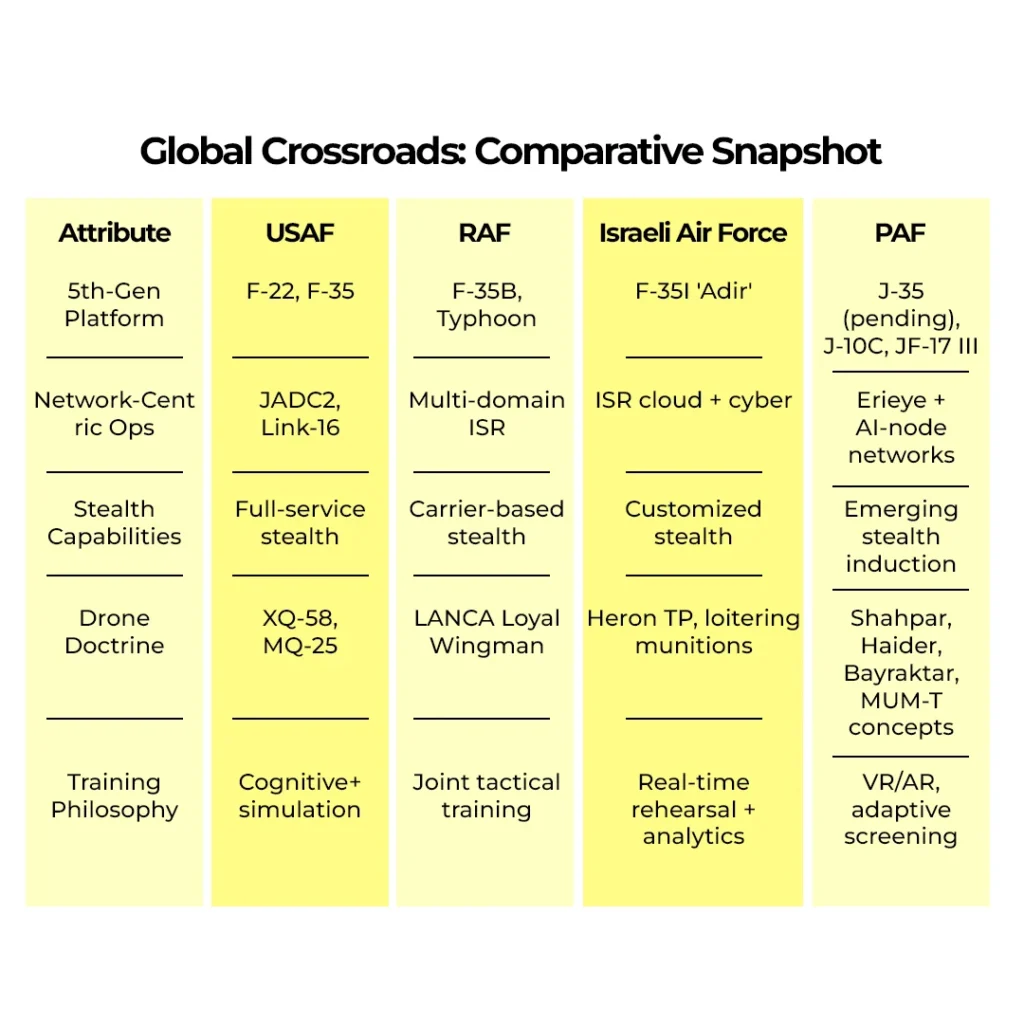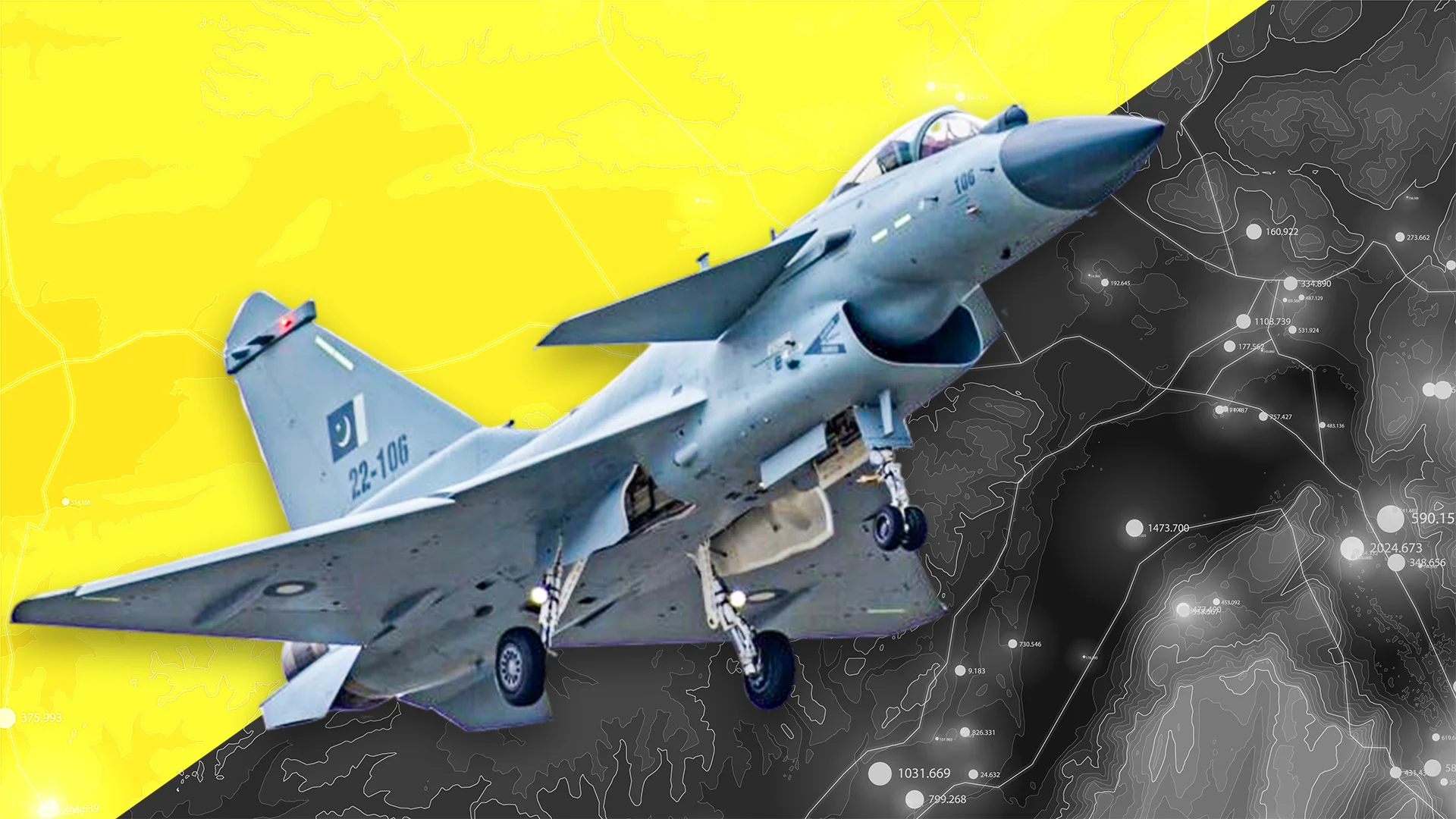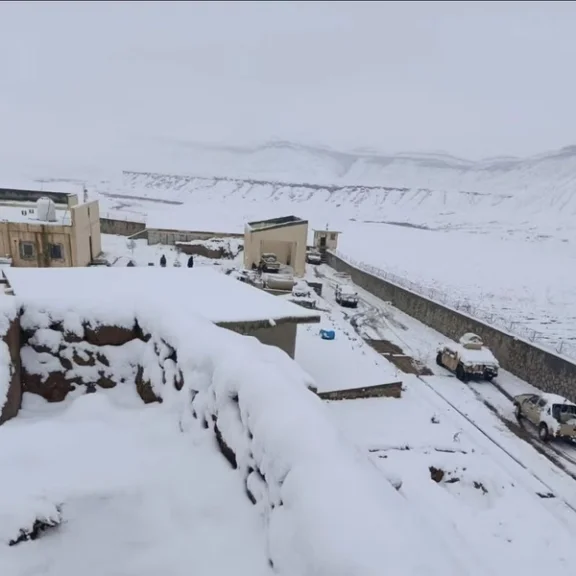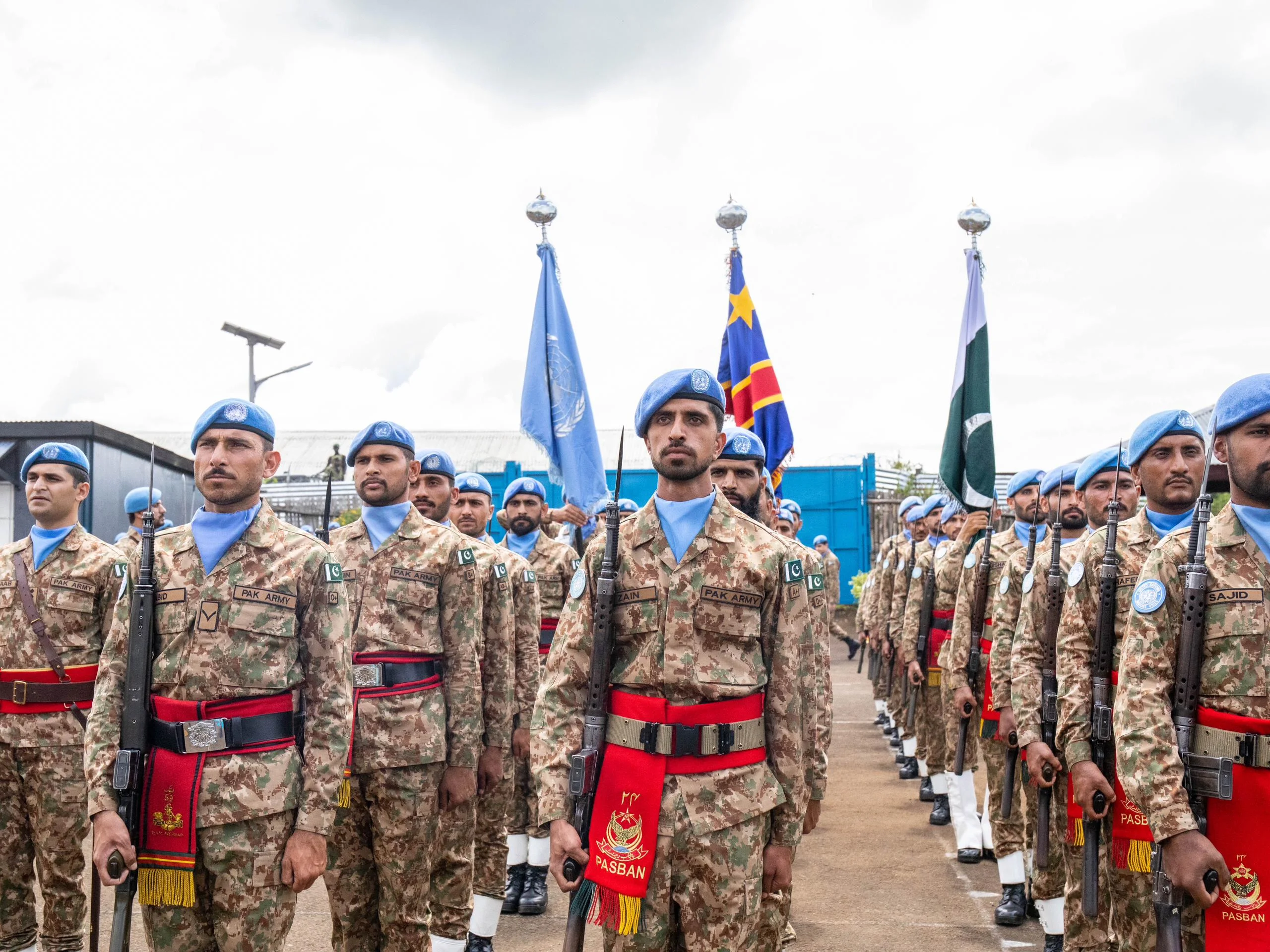The brief but bruising conflict of May 2025 reshaped South Asia’s airpower calculus. India, confronting its aerial missteps, now pivots toward posture and prestige. Pakistan, however, must reimagine its warfighting paradigm, not for optics, but for survival. By 2030, the Pakistan Air Force (PAF) must evolve into a fifth-generation force, driven by strategic necessity and sovereign relevance.
Strategic Necessity, Not Prestige
India’s Rafale acquisition, armed with Meteor BVRAAMs, Scalp cruise missiles, and advanced electronic warfare suites, was hailed as a technological leap. Yet, in the crucible of May 2025, Pakistan’s integrated air defences and networked fighters proved their mettle, forcing Indian planners to reevaluate assumptions and exposing doctrinal flaws.
Rather than mirror India’s procurement trajectory, Pakistan opted for synergy. The induction of the Chinese J-10C Vigorous Dragon, combined with the evolution of its indigenous JF-17 Block III, marked a deliberate pivot away from prestige and toward scalable performance. This recalibration echoes global trends: the US, UK, and Israel are likewise prioritizing modularity, networked warfare, and unmanned integration, not just legacy dominance.
J-10C and JF-17 Block III: Backbone of Tactical Resilience
These two fighters now anchor Pakistan’s high-tempo capability.
J-10C Advantages:
- AESA radar for multirole targeting
- PL-15 long-range air-to-air missiles (~200+ km range)
- Fly-by-wire and thrust-vectoring agility
- Digital architecture enabling EW pods and platform teaming
JF-17 Block III Breakthroughs:
- KLJ-7A AESA radar and Helmet-Mounted Display Systems
- PL-15 compatibility and precision strike versatility
- Indigenous airframe for export and mid-life scalability
- Enhanced connectivity and electronic protection
Stealth Induction: The FC-31/J-35 Frontier
India’s flirtation with Su-57s or F-35s warrants Pakistan’s stealth counterbalance, which could be the Chinese J-35A fifth-generation stealth fighter aircraft, developed by Shenyang Aircraft Corporation.
Key Stealth Features:
- Low-observable contours and internal weapons bays
- Multi-band sensor fusion for threat discernment
- AI support for rapid target prioritization
- Air-sea versatility for strike and ISR missions
Much like Israel, Pakistan’s stealth ambitions are not about matching platform for platform. Instead, they emphasize tech adaptation: stealth coatings, data compression, and adversarial simulation. The Israeli Air Force’s Adir variant is deeply networked with cyber units and electronic intelligence, reinforcing the notion that stealth today is more software than skin.
Network-Centric Warfare: The Digital Backbone
Modern warfighting tilts toward digital superiority. Pakistan is investing heavily in its own air-combat cloud.
Key Developments:
- Erieye AEW&C as airborne battle manager
- Real-time data fusion across fighters, UAVs, and SAMs
- Upgraded ground intercept grids and encrypted uplinks
- AI-enabled decision-support modules
By comparison, Israel’s digital ecosystem is formidable. It fuses F-35Is, drones, missile defence (Iron Dome, Arrow), and cyber warfare into a unified strike-defence command. The US employs Joint All-Domain Command and Control (JADC2), while the RAF focuses on inter-platform ISR streams. Pakistan’s version, while nascent, reflects a bottom-up build—anchored by indigenous code, field-level feedback loops, and sensor sovereignty.
Rise of the Drones: The Unmanned Wingman
Drones now anchor PAF’s strategy, not just as ISR tools but combat partners.
Current Assets:
- Shahpar-II and Burraq for surveillance and light strike
- Haider-1 for electronic warfare and endurance missions
Next-Gen Concepts:
- Loyal Wingman pairing with manned platforms
- Jamming support and decoy operations
- Real-time battlefield mapping
- Swarm-enabled saturation strike capability
Pakistan’s drone doctrine is also expanding through strategic collaboration. Turkish platforms like the Bayraktar TB2 and Akinci offer proven ISR and strike capabilities, and ongoing discussions around joint development signal a future of interoperable, AI-enabled unmanned fleets. These systems—battle-tested and modular—align with PAF’s vision of scalable autonomy and regional tech synergy.
Globally, drones are reshaping air doctrine. The IAF integrates Heron TP, Harop loitering munitions, and Sky Striker UAVs into pre-emptive and reactive operations. Pakistan’s modular development, especially with AI-piloted unmanned systems, draws lessons from Israel’s emphasis on speed, autonomy, and multi-mission payloads.
Human in the Loop: Training the Fifth-Gen Aviator
Platforms are only as potent as those who wield them. Fifth-gen warfare demands mental agility and digital fluency.
PAF Training Initiatives:
- VR/AR scenarios for multi-threat rehearsal
- System-level education from cockpit to ground crew
- Cyber-hygiene and digital diagnostics embedded in curricula
- AI assessment tools for reflex and judgment profiling
The Israeli Air Force emphasizes adaptive command: simulators networked to real-time scenarios, cognitive load analysis, and mission rehearsals based on live adversary data.
Fleet Optimization and Tactical Readiness
Modernization without rationalization is self-defeat. PAF is gradually reshaping its fleet logic, not by discarding legacy platforms, but by repurposing and upgrading them to meet emerging threats.
Strategic Choices:
- Retirement of aging Mirage variants
- Selective F-16 upgrades, focusing on electronic warfare (EW), precision targeting, and interoperability with newer platforms. The Block 52+ fleet remains a vital component of Pakistan’s air defence, and future enhancements—such as Link-16 integration, advanced targeting pods, and radar upgrades—will ensure its relevance in hybrid warfare environments.
- Tactical reassignment of older assets to ISR and training roles
- Squadrons realigned to digital mission profiles
The F-16, long considered the backbone of PAF’s conventional deterrence, is being reimagined as a bridge between legacy strength and digital-era adaptability. Much like the USAF’s continued reliance on upgraded F-16s alongside stealth platforms, Pakistan’s approach blends proven reliability with strategic foresight.
Compared to Israel’s lean, stealth-heavy fleet, Pakistan’s structure is broader but evolving. This streamlining echoes the RAF’s Typhoon phasing and USAF’s divestment from legacy jets—yet Pakistan’s retention of the F-16 reflects a doctrine of layered resilience.
Global Crossroads: Comparative Snapshot

building its own doctrine, not borrowing another’s. The PAF isn’t chasing aircraft, it’s assembling architecture.
Conclusion: Toward a Digitized Sky Doctrine
By 2030, the Pakistan Air Force will not merely guard airspace, it will orchestrate influence, navigate digital battlescapes, and command presence across kinetic and cognitive domains. Its evolution, shaped by hard-earned lessons and unflinching resolve, reflects more than a response to regional pressures, it signals a purposeful stride into global relevance.
The Rafale jolt and the J-10C pivot were not isolated events; they marked a doctrinal shift. Pakistan now embraces agility over arrogance, architecture over acquisition. The rise of indigenous drones, network-centric warfare, and stealth experimentation points to a military culture that no longer seeks parity—it seeks proactive positioning.
To cement this transformation, Pakistan must:
- Deepen joint R&D with China, Turkey, and other technological allies
- Advance stealth composites, sensor fusion, and AI avionics tailored to local context
- Sustain cost-effective, doctrine-aligned force structures that optimize operational readiness
- Prepare for fluid domains—swarm logic, hypersonic threats, and contested electromagnetic corridors
PAF 2030 isn’t a slogan, it’s a strategic scaffold under active assembly. As the USAF layers its doctrine with JADC2, and the Israeli Air Force fuses stealth with cyber-integration, Pakistan ripostes with a distinctly sovereign innovation arc—lean, locally anchored, and mission-driven. In this theatre of altitude and algorithms, it is not mimicry that earns survival—it is mastery, cultivated through foresight, focus, and force that speaks not just in decibels but in decisions.
The sky is no longer the limit—it is the interface
The views expressed in this article are the author’s own. They do not necessarily reflect the editorial policy of the South Asia Times.







